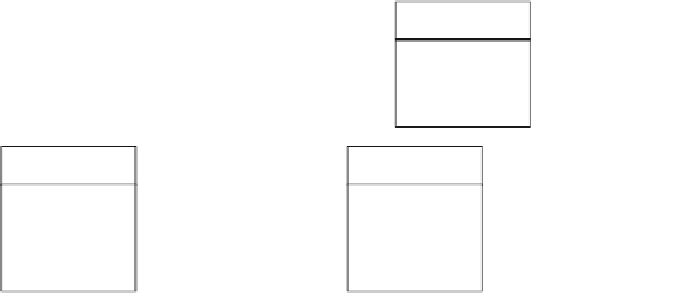Database Reference
In-Depth Information
this case, the
Client
level in the two schemas in Fig.
4.21
is replaced by a
nonstrict hierarchy composed of the
ClientGroup
and the
Client
levels.
Finally, to avoid many-to-many dimensions, we can choose one client as
the primary account owner and ignore the other clients. In this way, only
one client will be related to a specific balance, and the schema in Fig.
4.19
can be used without any problems related to double counting of measures.
However, this solution may not represent the real-world situation and may
exclude from the analysis the other clients of joint accounts.
ClientGroup
Client
GroupId
...
ClientId
ClientName
ClientAddress
...
Time
Account
Agency
Balance
Date
Event
WeekdayFlag
WeekendFlag
...
AccountNo
Type
Description
OpeningDate
...
AgencyName
Address
Area
NoEmployees
...
Amount
Fig. 4.22
Alternative decomposition of the fact in Fig.
4.19
In summary, many-to-many dimensions in multidimensional schemas
can be avoided by using one of the solutions presented in Fig.
4.21
.The
choice between these alternatives depends on the functional and multivalued
dependencies existing in the fact, the kinds of hierarchies in the schema, and
the complexity of the implementation.
4.4 Querying the Northwind Cube Using the OLAP
Operations
We conclude the chapter showing how the OLAP operations studied in
Chap.
3
can be used to answer a series of queries addressed to the Northwind
cube in Fig.
4.2
. The idea of this section is to show how these operations
can be used to express queries over a conceptual model, independently of the
actual underlying implementation.
Query 4.1.
Total sales amount per customer, year, and product category.
ROLLUP*(Sales, Customer
→
Customer, OrderDate
→
Year,
Product
→
Category, SUM(SalesAmount))
















Search WWH ::

Custom Search